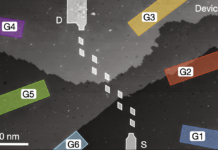A new sensor detects, with extreme accuracy, the presence of occupants in a vehicle. A team from the University of Waterloo, Canada, developed the low-cost, low-power radar that can save the lives of children and pets left alone in a car.
The device uses frequency modulated continuous wave (FMCW) radars to send signals that are reflected back by people, animals and objects. Then, machine learning algorithms analyse the signals and determine the occupancy of the vehicle.
Such FMCW radars have several advantages over other devices, including the detection of vital signs, wireless fingerprint identification, and gesture recognition, causing no long-term health complications to the occupants of the vehicles. Its primary purpose, according to the researchers, is to detect the presence of unattended children or animals inside a car. When such situations are detected, the device prevents the locking of the vehicle doors and sounds an alarm to alert the driver, passengers and other people in the area.
The sensor was presented at this year’s edition of the Institute of Electrical and Electronics Engineers (IEE) Sensors Conference, in Montreal, Canada.
A manuscript of this work is available at arXiv.org:
Alizadeh, Mostafa, Hajar Abedi, and George Shaker. “Low-cost low-power in-vehicle occupant detection with mm-wave FMCW radar.” arXiv preprint arXiv:1908.04417 (2019).



